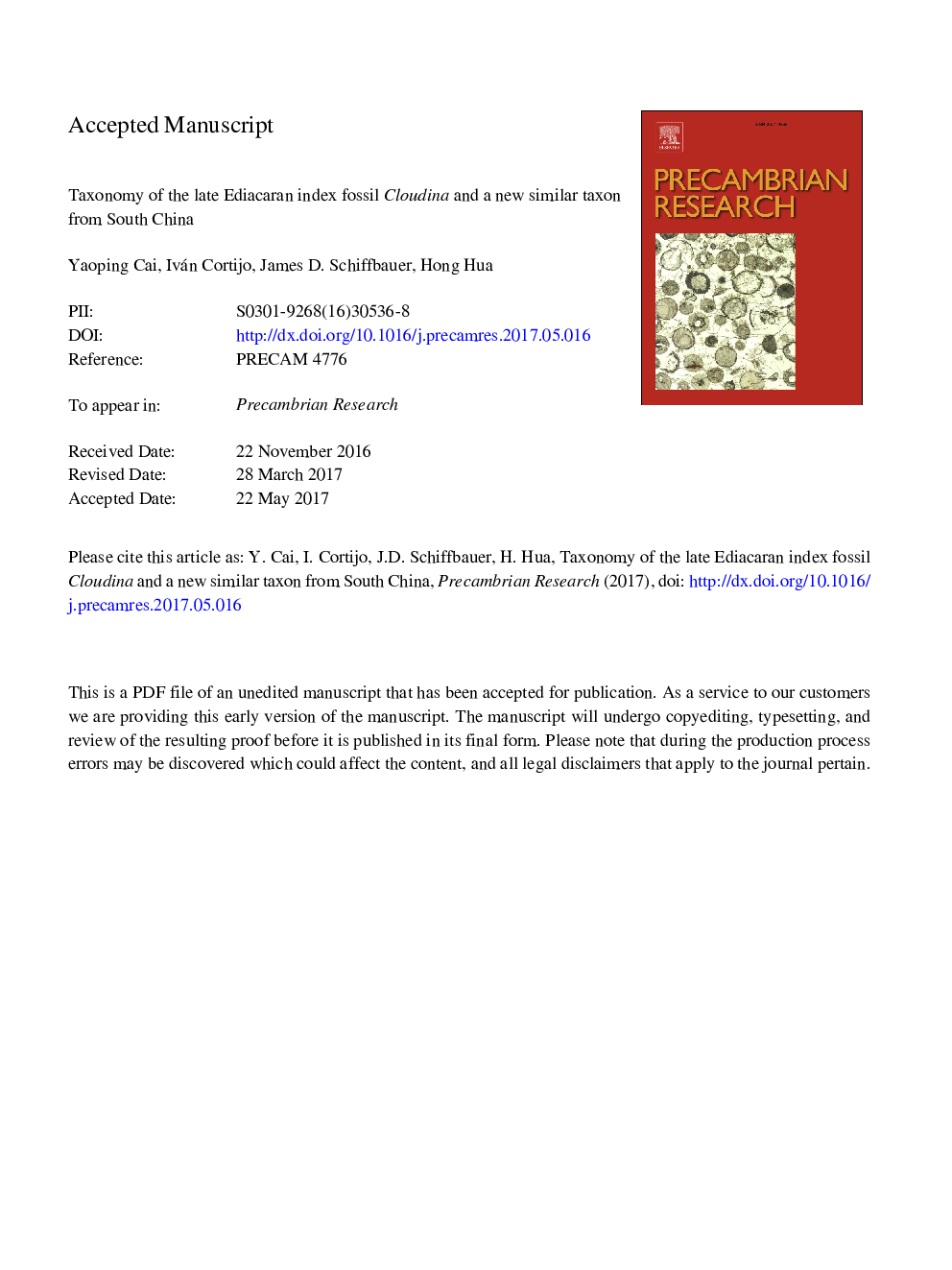| Article ID | Journal | Published Year | Pages | File Type |
|---|---|---|---|---|
| 5784789 | Precambrian Research | 2017 | 42 Pages |
Abstract
Cloudina is a late Ediacaran tubular fossil known from almost every continent. It is typically a mm- to cm-sized conical tube consisting of multiple, nested, funnel-shaped elements, forming the diagnostic “funnel-in-funnel” tube construction. Although the morphology and paleoecology of Cloudina have been extensively reconstructed, a comprehensive morphological description, specifically to enable interspecific distinction, is yet lacking, primarily due to poor taphonomic resolution. Here we illustrate a number of interspecific variations of three-dimensionally preserved Cloudina fossils from the late Ediacaran Dengying Formation (southern Shaanxi Province, South China). A systematic re-evaluation of previously published Chinese Cloudina is documented: two published species (C. sinensis and C. lijiagouensis) are synonymized with the type species (C. hartmannae) and two new species (C. ningqiangensis n. sp. and C. xuanjiangpingensis n. sp.) are established. The type species and the two new species are distinguished by the location of transverse and/or oblique annulations occurring at different portions of the funnel. A new co-occurring Cloudina-like fossil, Multiconotubus chinensis gen. et sp. nov., with a “cone-in-cone” tubular construction is also reported and described in this study, and a detailed comparison is provided between these taxa. The revised taxonomy of Cloudina fossils not only adds to our knowledge of morphological disparity of these important organisms, but also helps to reconstruct their paleogeographic distribution and related paleoecological dynamics.
Related Topics
Physical Sciences and Engineering
Earth and Planetary Sciences
Geochemistry and Petrology
Authors
Yaoping Cai, Iván Cortijo, James D. Schiffbauer, Hong Hua,
